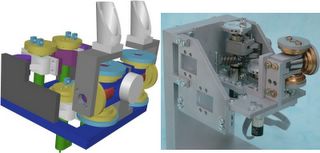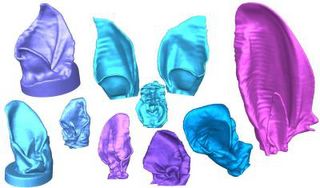Robot Mimics Bat Sonar
A robotic bat head that can emit and detect ultrasound in the band of frequencies used by the world's bats will give echolocation research a huge boost.
The Bat-Bot, developed by IST project CIRCE, can also wriggle its ears, a technique often used by bats to modulate the characteristics of the echo.
"Sonar in water is a mature field, but sonar in air is far less advanced," says Dr Herbert Peremans, who is head of the Active Perception Lab the University of Antwerp and CIRCE coordinator.

"There are about 700 echolocating bat species, and they use a wide range of frequencies. We needed a single device that could handle that entire range. The transducer developed by one of the partners can do that and has some additional advantages making it a promising technology for further commercialisation," he says.

IST Results - Bat-bot boosts sonar research
The Bat-Bot, developed by IST project CIRCE, can also wriggle its ears, a technique often used by bats to modulate the characteristics of the echo.
"Sonar in water is a mature field, but sonar in air is far less advanced," says Dr Herbert Peremans, who is head of the Active Perception Lab the University of Antwerp and CIRCE coordinator.

"There are about 700 echolocating bat species, and they use a wide range of frequencies. We needed a single device that could handle that entire range. The transducer developed by one of the partners can do that and has some additional advantages making it a promising technology for further commercialisation," he says.

IST Results - Bat-bot boosts sonar research

0 Comments:
Post a Comment
Subscribe to Post Comments [Atom]
<< Home